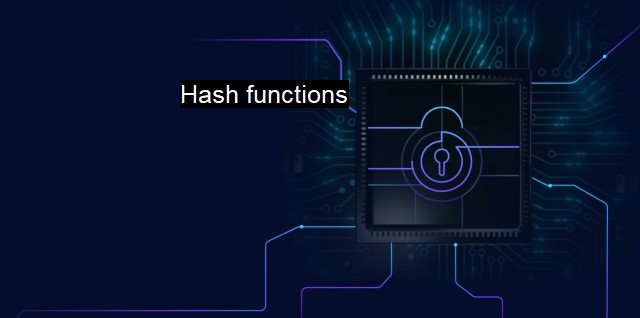What are Hash functions?
The Importance of Cryptographically Secure Hash Functions in Cybersecurity and Data Protection
Hash functions play a crucial role in several aspects of the cybersecurity scene. In its simplest form, a hash function is a unique code that is assigned to a specific piece of data. This function takes input of data of arbitrary size and efficiently transforms it into a fixed-size value or key. To simplify, it converts an input into an alphanumeric string, generating a unique identifier for every individual set of data. This resultant output is known as a hash code, digest, or simply a hash.In a security context, hash functions are essential in ensuring the integrity of data. Any change in input, even a tiny one, results in a significantly different hash. For instance, "hello" and "Hello", produce markedly differing hash codes, even though there is only a slight difference – a single capitalization. This property is utilized extensively in data integrity checks. If two sets of information generate the same hash codes, it implies that the data is undeniably similar. This is called hash value comparison, a technique largely popular in areas of data forensics and virus detection.
Unique hashing is vital in the operation of antivirus software. Antivirus scanners generate hash codes for files and check them against a database of hashes related to known malicious software or malware. This expediently filters out files that are undeniably safe, without laboring to dissect the code and inspect its behavior further. This method known as hash scanning dramatically increases the speed of virus detection and decreases false positives. Because malware often mutates to prevent detection, updated antivirus software must have the ability to analyze behavior, rather than just relying on hash matching.
Hash functions can also be used in password management for storing and validating passwords. Rather than storing actual passwords which could be pilfered by hackers, systems will store password hashes. When a user executes a login operation, the password is put through a hash function and the outcome is compared with the stored hash. If the hashes match, the system confirms a successful login. By storing hashes instead of passwords, even if data theft were to occur, the actual password isn’t directly attainable.
Digital signatures employ hash functions to confirm the validity of software and messages. Message text is converted to a hash value, which is then encrypted using a private cryptographic key. If the signature is authentic and unmodified, when the recipient uses the sender's public cryptographic key to decrypt the hash, they are able to verify its origin and correctness by comparing it with the hash of the original message.
Applications of hash functions extend to distributing keys in a network, storing cookies in a web browser, analyzing network packets for intrusions, and within blockchain technologies. Blockchains are essentially linked lists of transactions bound together by hashes, where each block's hash is based on the hash in the preceding block, making record alteration nearly impossible.
Hash functions aren't inherently secure or insecure. They're just encoding systems. The degree of data security depends largely on the function's design and implementation. For instance, an ideal cryptographic hash function would possess few essential properties like preimage resistance, where it's difficult to retrieve the original data given the hash, and second preimage resistance, where it's unfeasible to find similar inputs producing the same hash.
Despite the advantages, it’s crucial to be aware of vulnerabilities of hashing like collision attacks, where different data produces the same hash. Though rare for strong hash functions, they could still occur and thus necessitate continuous algorithmic improvements and vigilance.
Hash functions are a fundamental component of cybersecurity measures presently used in antivirus programs, digital signatures, password protection, data integrity verifications, and identification techniques. As cybersecurity evolves, these functions will continue to serve as necessary measures and tools against potential threats.

Hash functions FAQs
What are hash functions?
Hash functions are mathematical algorithms that transform data into a fixed-size string of characters, which serves as a unique representation of the original data. They are commonly used in cybersecurity and antivirus software to detect changes to files and to verify the authenticity of messages.Why are hash functions important in cybersecurity?
Hash functions play a critical role in cybersecurity because they allow for the secure transfer of data and the detection of tampering. By calculating the hash value of a file or message, a recipient can verify that it has not been altered during transit or by a malicious actor.How do hash functions help antivirus software detect malware?
Antivirus software uses hash functions to create a database of known malware signatures. When the software scans a file, it calculates the hash value and compares it to the hashes in the database. If there is a match, the software knows that the file is malware and takes appropriate action.Are all hash functions the same?
No, there are many different hash functions with varying levels of security and efficiency. Some popular hash functions include MD5, SHA-1, and SHA-256. It is important to choose the appropriate hash function for a given application and to keep up with advances in cryptography to ensure continued security.| | A | | | B | | | C | | | D | | | E | | | F | | | G | | | H | | | I | | | J | | | K | | | L | | | M | |
| | N | | | O | | | P | | | Q | | | R | | | S | | | T | | | U | | | V | | | W | | | X | | | Y | | | Z | |
| | 1 | | | 2 | | | 3 | | | 4 | | | 7 | | | 8 | | |||||||